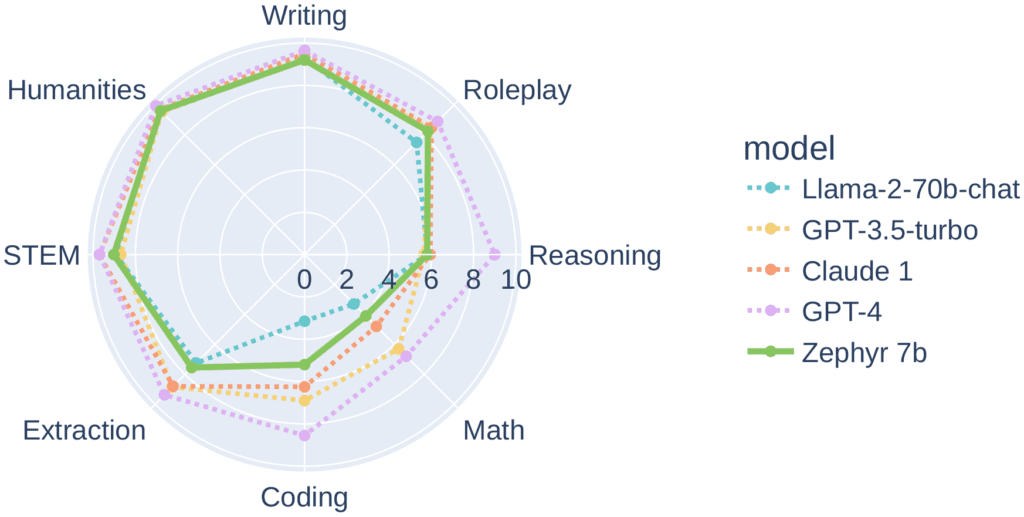For the sake of XYZ – I will only cover the top three readily available LMs on Hugging Face repository.
Navigating the World of Language Models: Insights for Modern Applications
In the ever-evolving landscape of natural language processing (NLP) and machine learning (ML), selecting the right language model is both crucial yet increasingly complex. This guide elucidates key metrics and considerations for comparing and selecting from the leading language models in the space today.
Model Size and Capacity
A model’s ‘size’ refers to its number of parameters, the foundational elements that learn patterns from training data to understand and generate language. Generally, larger models with more parameters have greater capacity to comprehend linguistic nuance and produce human-like text. However, expanded size necessitates intensive computational resources.
Safety and Ethical Alignment
Alignment refers to specialized techniques in model training, fine-tuning, and curation of datasets. The goal is to ensure model outputs are congruent with ethical human values, risk-averse behavior, and environmental mindfulness. As language models grow more powerful in capability, prioritizing safety and positivity guides innovation responsibly.Why is this important?In the context of developing advanced AI systems, alignment involves implementing specialized methods during the training, refinement, and selection of data. This process is crucial for ensuring that the outputs of these systems align with the core principles of ethical business conduct, risk management, and environmental stewardship.As the capabilities of these AI models expand, it becomes increasingly important for companies, especially those at the forefront of industry like Fortune 500 businesses, to focus on safe and positive innovation, underpinning responsible corporate growth and maintaining public trust.
Benchmarking Model Performance
Standard benchmarks provide quantifiable metrics to compare diverse models’ capabilities:
- MT-Benchmark Score: Evaluates proficiency in translation and core language tasks.
- AlpacaEval Win Rate: Measures performance across different datasets versus baseline models or competitors. Higher is better.
Introducing the Top Contenders
Let’s explore the leading models based on benchmark data:
-
Zephyr-7b-β excels across both key benchmarks. Its versatility spanning translation, comprehension, and generation makes it well-suited for generalized applications, albeit with intensive computational requirements.
-
Vicuna v1.3 prioritizes translation capabilities while remaining competitively versatile per benchmark scores. It strikes a balance between specialization and flexibility.
-
Llama2-Chat boasts the highest AlpacaEval score, positioning it as an expert in dialogue and conversational applications. It likely utilizes state-of-the-art techniques to ensure safety and ethical alignment.
Real-World Impact: Language Models in Action
The true test of these models lies in their real-world applications:
-
Zephyr-7b-β: Revolutionizing customer service, this model has enabled a leading online retailer to understand and resolve customer inquiries in real-time, reducing call handling time and improving satisfaction.
-
Vicuna v1.3: In healthcare, this model has been pivotal in translating medical records for a hospital network, aiding in patient care across language divides.
-
Llama2-Chat: Within education, this model powers a virtual tutor, providing interactive and personalized learning experiences for students.
Case Studies: Success Stories Across Sectors
-
Financial Services: A multinational bank used Zephyr-7b-β to interpret customer sentiment, enabling tailored financial advice and improving retention.
-
Legal Industry: Vicuna v1.3 helped a legal firm to efficiently translate legal documents for international cases, saving costs and maintaining precision.
-
Entertainment: Llama2-Chat enhanced digital entertainment by powering interactive storytelling applications, allowing users to engage in personalized narratives.
Comparing Model Capabilities and Use Cases
-
Zephyr-7b-β brings to the table balanced NLP capabilities to handle diverse tasks from customer service chatbots to targeted content creation. However, its scale warrants efficiency considerations.
-
Vicuna v1.3 makes translation fluency its primary focus while retaining adequate versatility. It also promises optimized computational usage for real-world deployments.
-
Llama2-Chat is purpose-built for user-facing conversational AI requiring robust safety guardrails. Its specialized design powers next-level interactive experiences.
Applications
-
Content Creation Platforms: Zephyr-7b-β’s adept linguistic expression caters to both human creativity and automation.
-
Global Brand Enterprises: Vicuna v1.3 enables them to achieve localization excellence when expanding into international markets.
-
Conversational AI Startups: Llama2-Chat provides the ideal launchpad to craft ethical, entertaining chatbot interactions.
What Does the Future Hold?
As benchmarks push upwards, models may grow larger but not arbitrarily so. There is increasing focus on specialized applications balanced by efficiency, compact generalization, and fail-safe measures for reliability.
Conclusion
In various categories of the MT-Bench benchmark, Zephyr-7B-β demonstrates robust performance, outshining larger-scale open models such as Llama2-Chat-70B. For intricate tasks involving coding and mathematics, Zephyr-7B-β falls short when compared to proprietary models. Further research and development are essential to bridge this performance gap.
Selecting language models transcends standalone metrics; it requires holistic deliberation across capabilities, ethics, and computational needs vis-à-vis the end goal. For every business, research, or development pursuit, there is likely a language model fit for purpose to deliver responsibly. As progress compounds exponential possibilities, our commitment to positive impact becomes pivotal.
You can find the datasets used for training Zephyr-7B-β here.

TL;DR
- Language models like Zephyr-7b-β, Vicuna v1.3, and Llama2-Chat are leading options for NLP tasks, with tradeoffs in size, compute needs, and capabilities.
- Benchmarks like MT-Benchmark and AlpacaEval help quantify model performance across metrics like translation, task proficiency, and win rate.
- Zephyr-7b-β balances strong performance and versatility but requires heavy compute resources.
- Vicuna v1.3 focuses on translation while being efficient computationally.
- Llama2-Chat specializes in dialogues and conversational AI necessitating ethical alignment. Real-world case studies demonstrate their business impacts.


